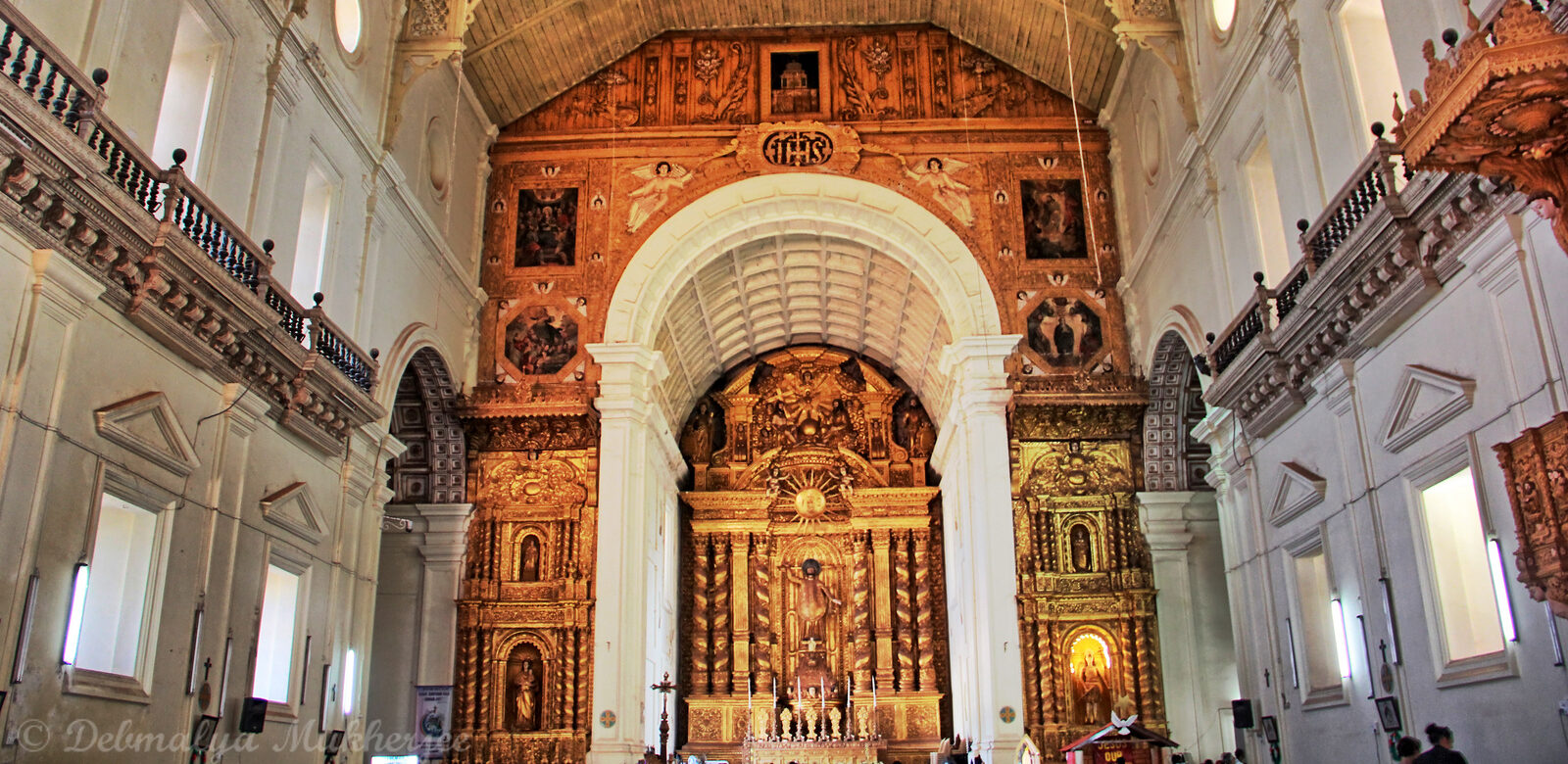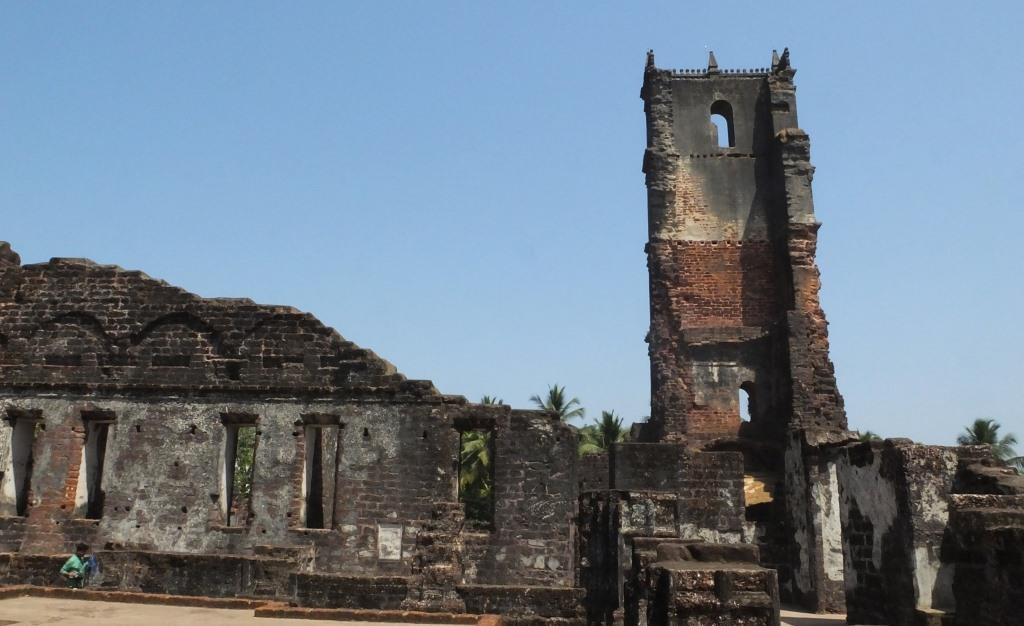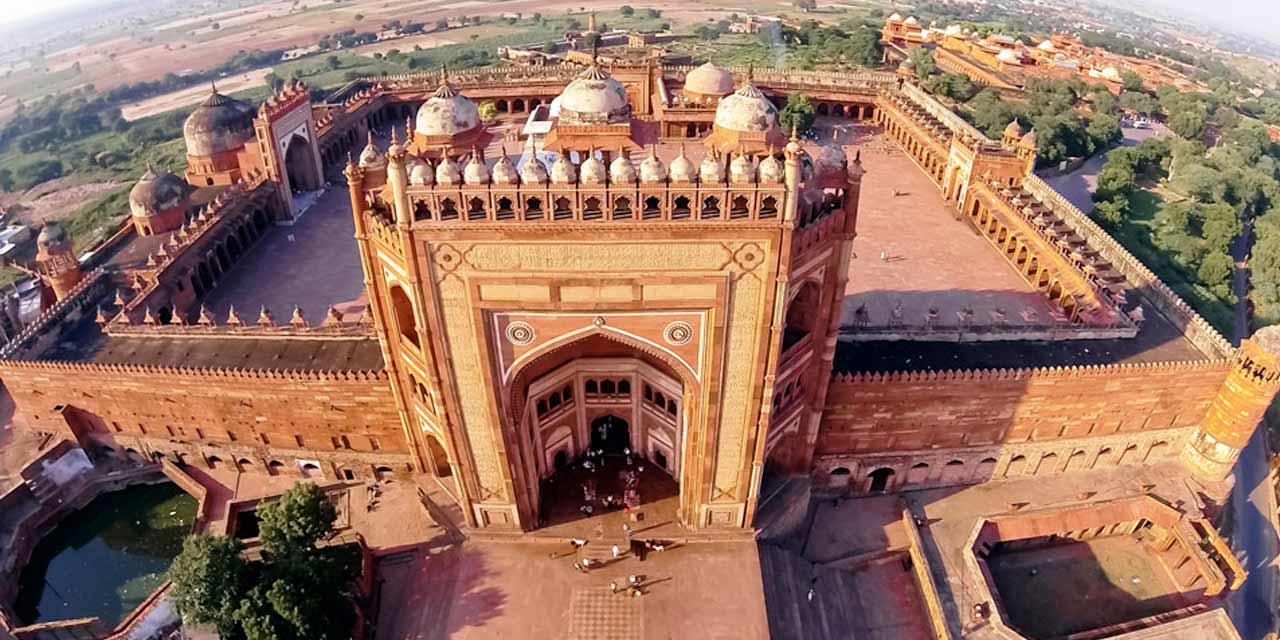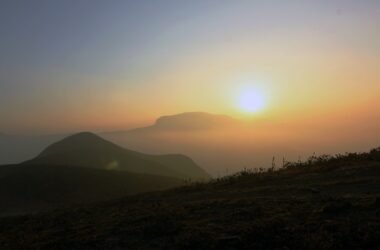CHURCHES AND CONVENTS OF GOA – The churches and monasteries of Goa, the former capital of the Portuguese Indies – most notably the Church of Bom Jesus, which houses the tomb of St. Francis-Xavier – illustrate the evangelization of Asia. These monuments were influential in spreading the forms of manuals, mannerists, and baroque art to all the countries of Asia where missions were established.
Se Cathedral, Goa

CHURCHES AND CONVENTS OF GOA
With its grand façade facing east to welcome each new day, and to the west of the great square Terreiro de Sabaio, the Se Cathedral is the grandest of all the churches in Old Goa, with its domed interior giving visitors its grandeur. Overwhelm with. From Cathedral Goa, is dedicated to St. Catherine
Timings
Open everyday from 7.30 am to 6 pm.
Mass Timings
Weekdays – 7.30 am and 6.00 pm
Sunday – 7.15 am, 10.00 am and 4.00 pm
Claim to fame: Se Cathedral, built on the feast of Afonso Albuquerque, won at St. Catherine’s feast of Alexandria, is the largest church in Asia. It is the Cathedral of the Archbishop of Goa.
With its magnificent Iberian façade, high terraces, magnificent mosaic work, intricate wood and gold water carvings, Se Cathedral, sometimes called St. Catherine’s Cathedral, is an absolute must for any visitor in Goa.
Must See
- The existing bell tower containing the Golden Bell
- The baptismal font used by St. Francis Xavier
- The main altar with its gilded reredos depicting scenes from the life of St. Catherine of Alexandria as well as her martyrdom.
- The Chapel of the Cross of Miracles, where a vision of the Christ was seen on the plain and unadorned cross in 1919.
- The Chapel of the Blessed Sacrament with its skillfully carved and gilded wall and ceiling.
- The wooden filigree screens separating the chapels from the nave.
- The six additional altars in the transept with the paintings depicting the lives of the saints
- The 18th century organ housed in one of the galleries.
- The statuary and paintings along the walls and in the niches of the pillars, including statues of St. Francis Xavier, St Ignatius of Loyola, St. Peter, St Paul and St. Christopher.
Basilica of Bom Jesus

CHURCHES AND CONVENTS OF GOA
Don’t let its immaculate air fool you, the Basilica of Bom Jesus is a World Heritage Monument, and has been christened by UNESCO. Its un-plastered exterior appears to be inferior at first glance when compared to the luminous aspects of churches such as the Sea Cathedral, but this small basilica is rich in art, architecture and history, and the remains of St. Francis Xavier are enshrined here.
Timings
Masses are held regularly at the Bom Jesus Basilica, the timings are as follows
Sunday – 8.00am, 9.15am and 6.00pm in Konkani, 10.15am in English
Mon to Sat – 7.00am, 8.00am and 6.00pm
Mass is also held at the chapel of St. Francis Xavier on the 6th of every month at 10.00am. Holy hour is held on the first Friday of every month at 5.00pm followed by Mass.
If you do not want to hear Mass, the Basilica is open to the public for viewing and exploration at the following times,
Mon to Sat – 9.00am to 6.30pm
Sunday – 10.30am to 6.30pm
Claim to fame: St. Francis is the remains of Xavier and the only basilica in Goa.
Must See
- Quadrangular pediment at the top of the un-plastered façade
- Carved columns both inside and outside
- Statue of St. Francis Xavier
- Main altar with carvings and gilding
- Gilded reredos with the statues of St. Ignatius and the Infant Jesus
- Chapel of the Blessed Sacrament
- Chapel of St. Francis Xavier
- Sacristy – chest containing the Golden Rose
- Painting of the relics of the saint
- Paintings of the saints
- Modern art gallery paintings, especially “The Last Judgement” and “Genesis”
Church of Our Lady of Rosary

CHURCHES AND CONVENTS OF GOA
Standing atop the Monte Santo (sacred hill) and keeping an eclectic eye on Old Goa, is the Church of Our Lady of the Rosary. Beautiful in its austerity and simplicity, this church is one of the only buildings in Goa that confirm the introduction of Renaissance architecture brought by the Portuguese to Goa. It is perhaps the most Portuguese of all Goa churches as it was not influenced by the architectural solutions of Goa, although they have their roots in the Portuguese tradition, they have their own unique status. Additionally, the building remains largely unchanged.
Timings
Open seven days a week from 9 am to 5.30 pm.
Claim to fame: The church has an inscription on the conquest of Goa in 1510 by Afonso de Albuquerque. Legend has it that Afonso de Albuquerque surveyed the attack of Adil Shah’s army from this hill and vowed to build a church there to thank him. Victory.
Must See
- Tombstone of Garcia De Sa & Cenotaph of Dona Catarina
- Towers andbuttresses
- Chapels andretables
- Carvings of the main altar
- Granite baptismal font
Church of St. Francis of Assisi

CHURCHES AND CONVENTS OF GOA
Traveling west from the C Cathedral, the archbishop arrives at the Old Palace, which serves as a drain from the cathedral to the church of St. Francis of Assisi.
Thanks to its renovation in 1665, this beautiful building displays a striking blend of architectural style and intricately carved artwork. The adjacent convent has long been converted into an archaeological museum and is well worth a visit in itself. No tour of Old Goa could be complete without a visit to this double attraction.
Timings
The Museum is open 7 days a week and its timings are as follows:
9.00am – 12.30 and 3.00pm to 6.30
The Church is open 6 days a week and the Timings are as follows
Mon to Sat – 7.30am to 6.30pm
Claim to fame: blending Portuguese-manual style portals from the old structure to the later Tuscan style building to create a unique piece of architecture. The adjacent convent houses the Museum of Archaeological History.
Must See
- Statue of Our lady of Miracles in the niche in the façade, brought over from Sri Lanka
- Octagonal towers
- Manueline architecture of the portal
- Paintings on the interior walls depicting scenes from the Bible
- Statues of St. Francis of Assisi and Jesus on the altar
- Baroque and Corinthian carvings on the altar itself
- Wood Paintings depicting the life of St. Francis of Assisi
- Frescoes with floral decorations
St. Cajetan’s Church
Undeniably one of the most beautiful churches in Goa, this grand old building is located in Old Goa, to the northeast of the Cathedral. Although the church was originally dedicated to Our Lady of Divine Providence, it is commonly referred to as the Church of St. Cajetan, a contemporary of St. Francis Xavier and the founder of the Order of Monks called Theatines.
This is probably due to his dedication and the time he went through to build the church in the first place.
Timings
The church is open seven days a week from 9.00 am to 7.00pm.
Claim to fame: It was built in Rome for architectural similarity with the Basilica of St. Peter. It also has stunning examples of the Corinthian style.
Must See
- Statues of St. Peter, St. Paul, St. John and St. Matthew niched in the façade
- Hemispherical dome, reminiscent of St. Peter’s Basilica, Rome
- Twin quadrangular belfry towers
- Four pillars with arches supporting the Cupola
- Verse from the gospel of Matthew inscribed around the cupola
- Main altar with the beautifully carved altarpiece depicting Our Lady of Divine Providence
- Paintings of the life of St. Cajetan adorning the walls and pillars
Ruins of the Church of St. Augustine
Close to Santa Monica’s nunnery, a tall tower still stands proudly, defying the uncertainties of the weather and the devastating times. It is the only surviving tower of the four that was once part of the church of St. Augustine. What was once perhaps the largest church in Goa is now a crumbling ruins, largely deserted, behind its glory days. However, there are still some secrets left in the ruins, who are willing to dig deep enough to find them.
Claims of Fame In 1986, UNESCO declared the ruins as a World Heritage Site. It is also the site of archaeological discovery of the remains of Queen Katevan.
Archaeological Heritage
Even though the original church lies in ruins, it becomes ever more apparent that it yet has unplumbed depths. Careful study beginning in 1990 has recently resulted in the discovery of the remains of the lost martyr, Queen Ketevan of Georgia. There is little that can be seen today of the gracious and imposing church and monastery which once stood at this site, however, it is still considered worth a visit. Clambering over the old ruins causes one to reflect on the passage of time, and its vagaries.
Do Read – Goa Perfect Itinerary
Frequently Asked Questions About Churches and Convents of Goa
Q. Who built churches and convents of Goa?
A – The construction of this imposing edifice began in 1562 during the reign of King Dom Sebastião (1557-78) and substantially completed by 1619.
Q. Who built churches in Goa?
A – One of Goa’s oldest churches, its construction was started in 1594 and was consecrated in 1605 by Archbishop Dom Father Aleixo de Menezes. There is an exposition every ten years to venerate the body of this Saint. The next exposition will be held in the year 2024.
Q. Which is the most famous church situated in the state of Goa?
A – Basilica of Bom Jesus
And on your trip to Goa, the one place that you must visit is the Basilica of Bom Jesus in old Goa. With more than 400 years, it is one of the oldest churches in the world and is recognized as a UNESCO World Heritage Site.
Q. What was the old name of Goa?
A – In ancient literature, Goa was known by many names, such as Gomanchala, Gopakapattana, Gopakapattam, Gopakapuri, Govapuri, Govem, and Gomantak. Other historical names for Goa are Sindapur, Sandabur, and Mahassapatam.
Q. What is special in Goa church?
A – By far, the most famous church in Goa, Basilica of Bom Jesus is a marvel of baroque architecture. This 16th-century church is a UNESCO Heritage site and contains the mortal remains of St. Francis Xavier, the famous Jesuit saint.
Q. Which church has a golden bell?
A – Cathedral’s tower houses a famous bell, the largest in Goa and one of the best in the world, often referred to as ‘Golden Bell’ on account of its rich tone. The main altar is dedicated to St. Catherine of Alexandria, and old paintings on either side of it depict scenes from her life and martyrdom.
Q. What is the architecture in churches in Goa?
A – This complex, along with some other churches of Old Goa, features on the UNESCO World Heritage list. Its exterior facade, built using black granite, is famed for Baroque architecture combined with Doric, Corinthian and composite influences.
Q. What is the architecture of Goa?
A – The architecture of Goan Catholics has strong Portuguese and native Goan influences. It developed over the Portuguese India era (1500s–1961). Many of the 16th and 17th colonial Catholic churches were built in the Portuguese Baroque style.
Q. How is Goa influenced by the Portuguese architecture?
A – The presence of the Portuguese has led to the introduction of Western architectural elements in Goa and other places in India. The result of this encounter of traditions was a highly original style both for religious buildings (churches, convents and Hindu temples) and secular buildings (civil and residential).
Q. What did the Portuguese do in Goa?
A – The Portuguese invaded Goa in 1510, defeating the Bijapur Sultanate. The Portuguese rule lasted for about 450 years, and heavily influenced Goan culture, cuisine, and architecture. In 1961, the Indian Army invaded and annexed Goa after a 36 hour battle.














